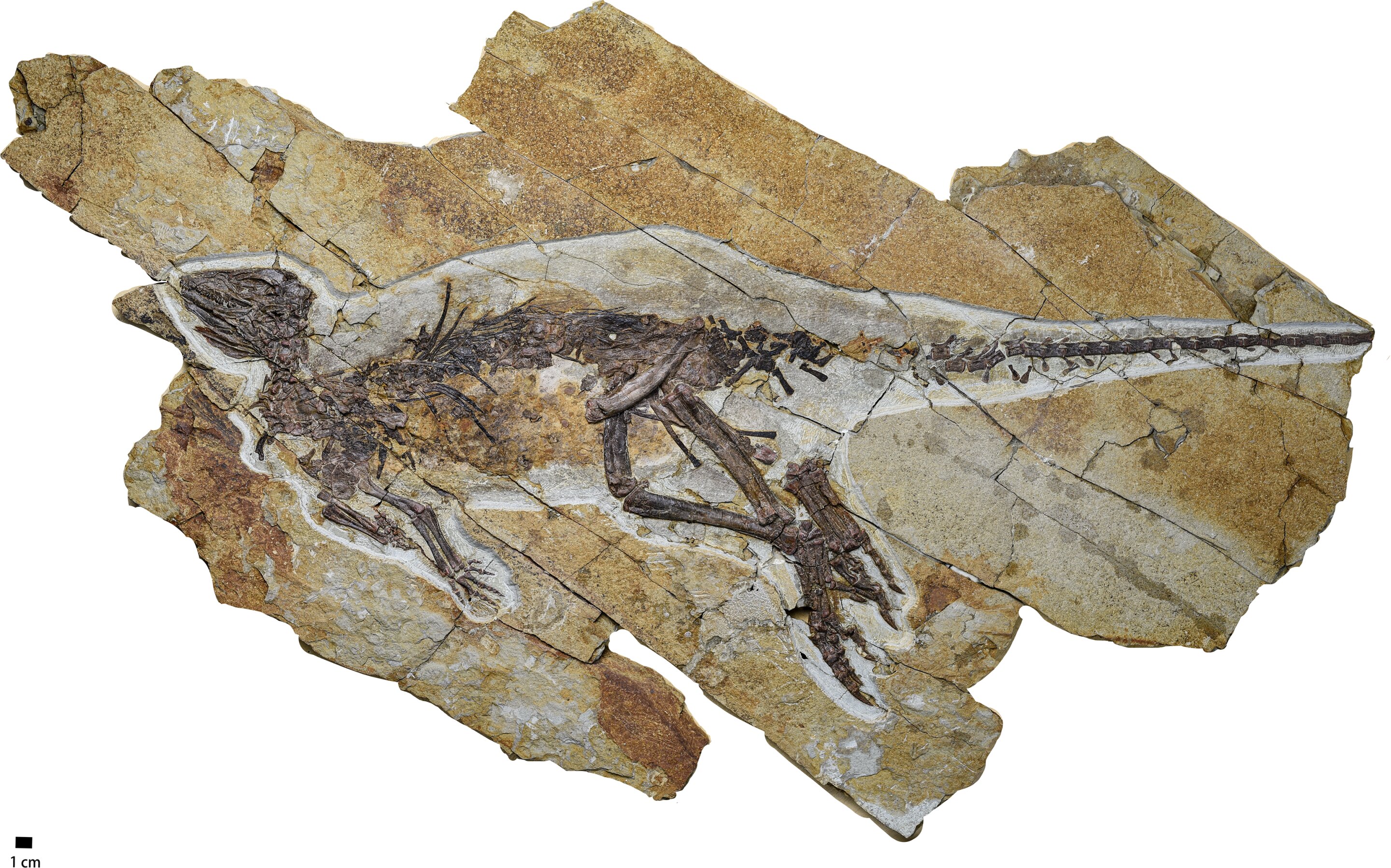Follow us on Google News (click on ☆)
A new dinosaur, named Pulaosaurus qinglong, has been identified thanks to exceptionally well-preserved fossils. This small herbivore, measuring about 2 feet long (60 cm), belonged to a group of dinosaurs with bird-like characteristics. Researchers were particularly intrigued by the structure of its larynx, suggesting it could produce sounds similar to modern birds.

The nearly complete skeleton of Pulaosaurus qinglong.
Credit: PeerJ (2025).
This discovery, published in PeerJ, comes from the Tiaojishan Formation, a famous fossil site in China. The fossils include not only bones but also rare soft tissues, offering a unique window into the life of these creatures 165 to 150 million years ago. Phylogenetic analyses place Pulaosaurus among the earliest representatives of its group.
Scientists also examined the contents of the dinosaur's intestinal cavity, finding clues about its diet. The presence of small pebbles and plant traces suggests it fed on tender vegetation. These discoveries enrich our understanding of dinosaur diversity and their evolution.
This study fills an important gap in the fossil record of ornithischian dinosaurs, a group that has received less attention than theropods.
How did dinosaurs produce sounds?
Dinosaurs, like modern animals, likely used a variety of methods to produce sounds. The discovery of laryngeal structures in Pulaosaurus qinglong suggests that some dinosaurs could emit vocalizations similar to birds.
Modern birds use their syrinx, a vocal organ located at the base of the trachea, to produce sounds. Dinosaurs like Pulaosaurus may have had analogous structures, though less specialized. This indicates a complexity in dinosaur communication far greater than previously imagined.
Studies of fossils continue to reveal details about dinosaur anatomy, allowing scientists to reconstruct their behavior and ecology. These discoveries challenge the traditional image of dinosaurs as silent creatures or only capable of roaring.
What was the diet of herbivorous dinosaurs?
Herbivorous dinosaurs had varied diets, adapted to their environment and morphology. Analysis of Pulaosaurus qinglong fossils revealed clues about its diet, including the presence of gastroliths, stones swallowed to aid in plant digestion.
These dinosaurs likely consumed tender plants, as evidenced by plant material traces found in their intestinal cavity. The structure of their teeth and jaw was adapted to this type of diet, allowing efficient chewing.
The discovery of these dietary details helps scientists understand how herbivorous dinosaurs evolved to occupy different ecological niches. It also shows the diversity of prehistoric ecosystems and the interactions between different species.